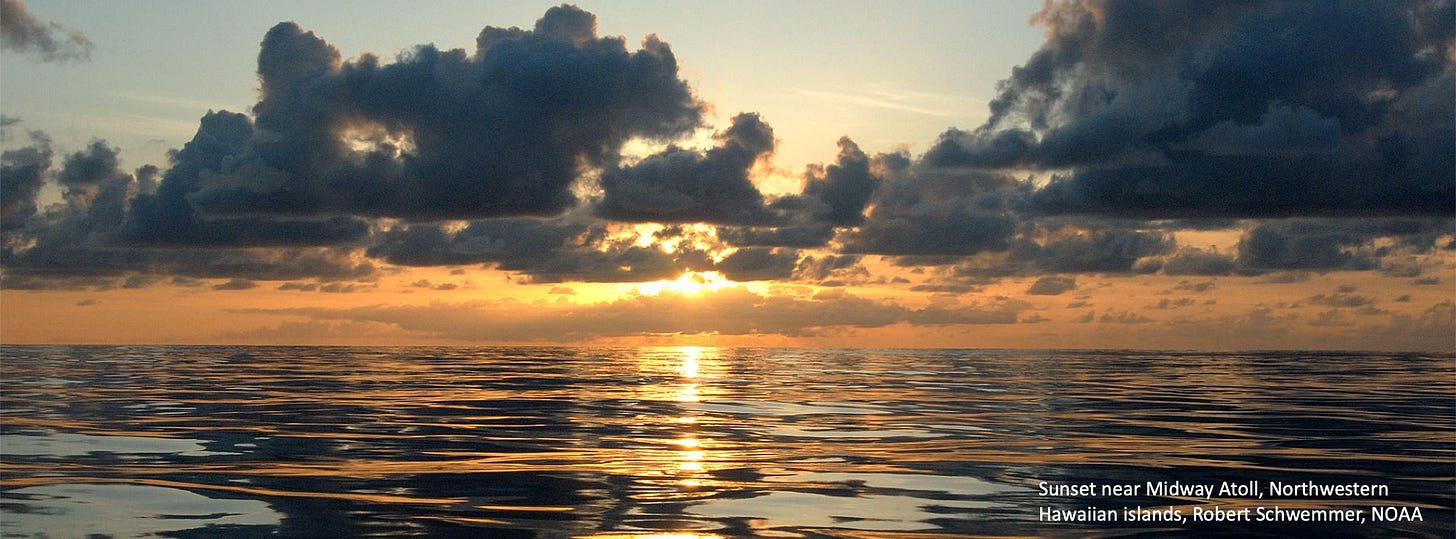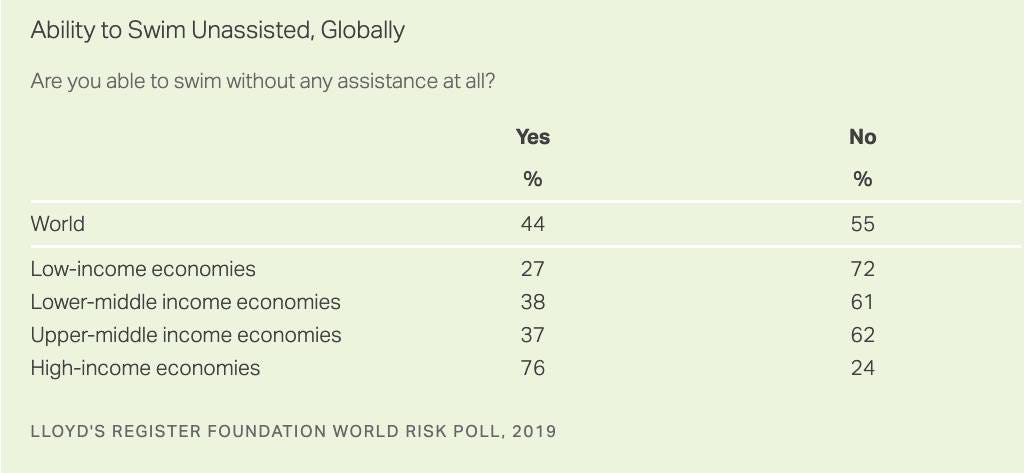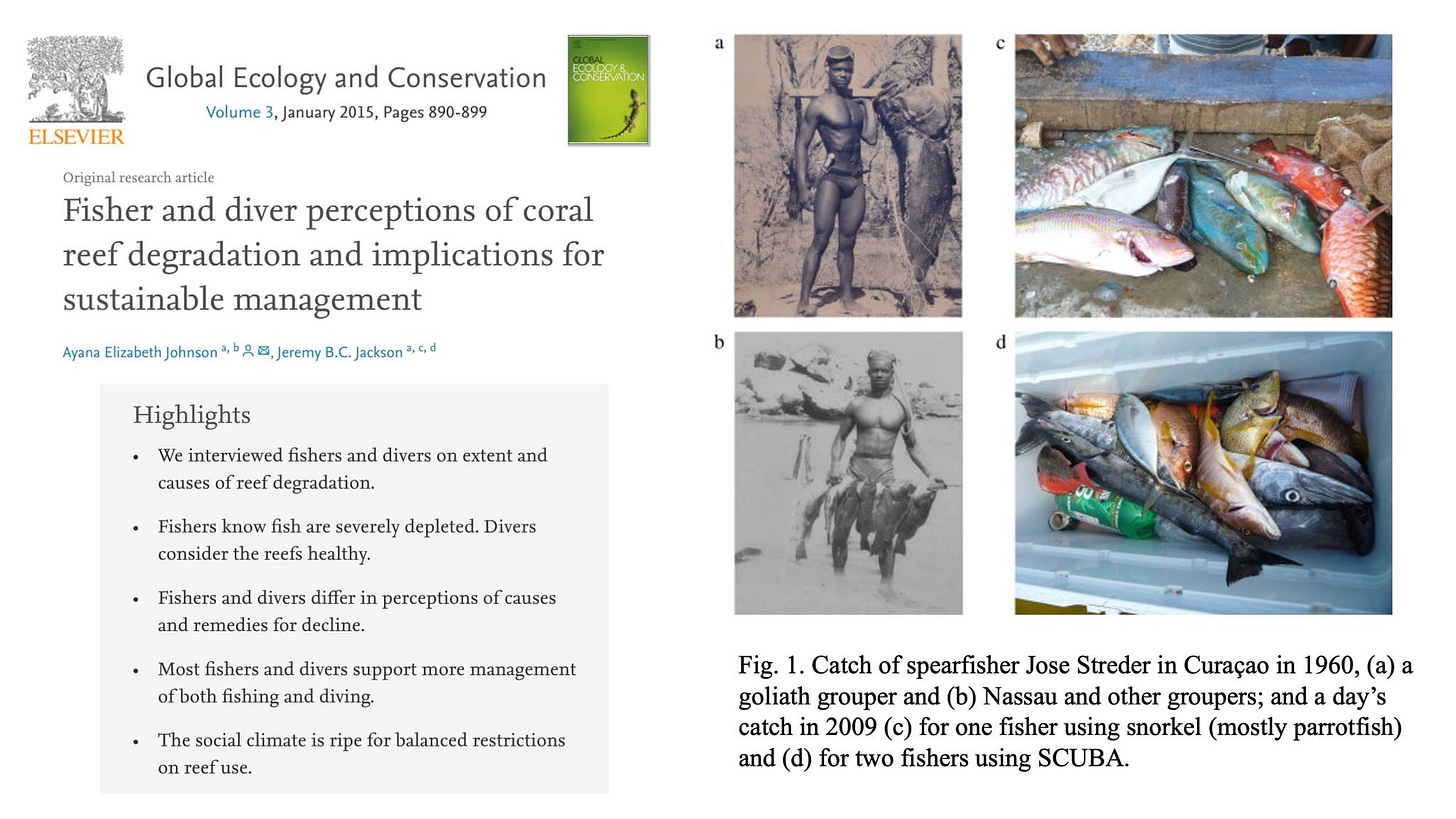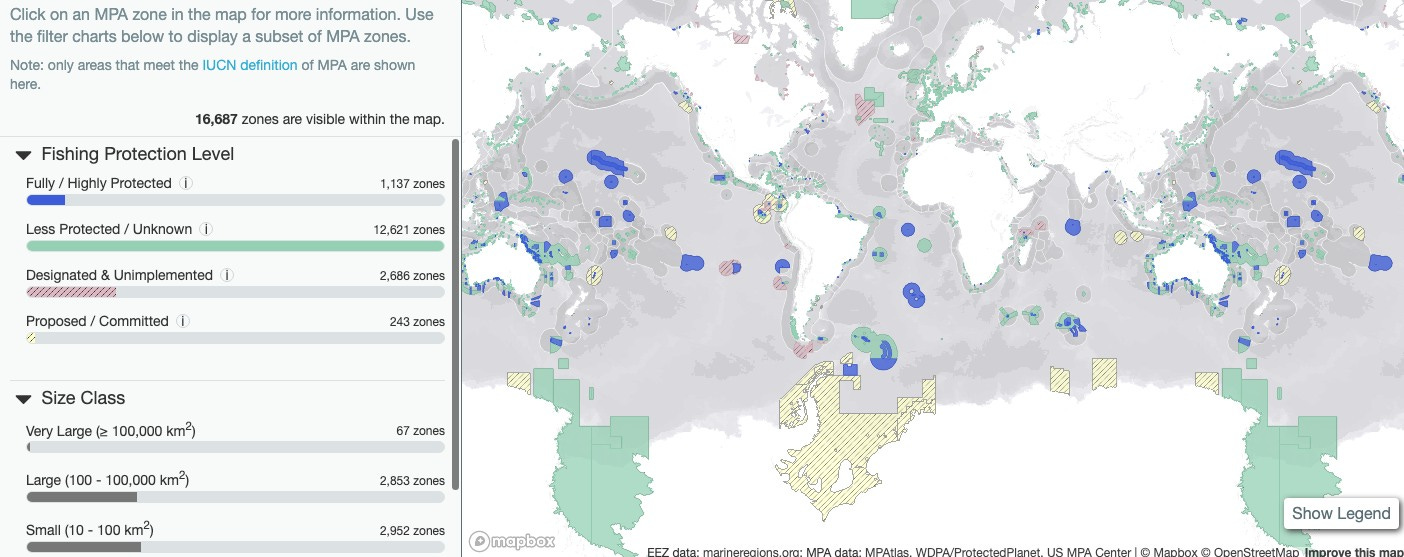A Hidden Ocean Conservation Opportunity - Helping People Worldwide Learn to Swim
It's time to do some major gap filling in ocean conservation efforts, starting in places where people rarely get the chance to look beneath the surface.
UPDATED - Last April, the United Nations Ocean Conference in Lisbon resulted in a batch of fresh pledges from from coastal countries and conservation-minded philanthropies to ecosystem protection, pollution reduction, restoration and fisheries management.
U.N. Secretary-General António Guterres opened the meeting, co-hosted by Portugal and Kenya, with one of his trademark invocations - saying a host of intensifying human pressures on the seas constitute an "ocean emergency."
I’ve written about the merits and weaknesses of declaring large-scale environmental emergencies, but Guterres is right, of course, about a suite of troubling marine trajectories.
The details on the pledges are below. But I’d like to propose one cheap and spreadable initiative that could help gain traction on grand ocean conservation goals where action is needed most, while also helping address another glaring problem. World Drowning Prevention Day provides a big fat hint.
Connect swimming lessons with conservation
Here's where not drowning connects with conserving coastal resources.
When I was teaching at Pace University from 2010 through 2016, I co-ran a documentary film production course with Professor Maria Luskay. In 2015, we went to Curaçao to do a short film on reef conservation efforts there and across the Caribbean. That's when I first got to know Ayana Johnson, who was a key voice in the resulting prize-winning film.
We also met Faisal Dilrosun, who at the time was a special advisor to the Curaçao Department of Health and the Environment and offered great insights on building the cultural environment necessary to conserve the biogeophysical one. Listen to him here, along with a related thought from Johnson:
"Education is crucial if you live on small islands, very close to the sea," he told us. "It’s very important that youth from a young age learn about the ocean, the coral reef. Also they should be able to go out there, with snorkel programs so the children learn about the value of the sea and the need for conservation from a young age.”
Dilrosun and others told us many people in Curaçao can’t swim, and of those who do, few had ever donned a diving mask to clearly see the enthralling “undersea world” that Jacques Yves Cousteau revealed so powerfully to my generation on American television in the 1960s.
It was Cousteau's books and TV program, and my direct experience dipping my head underwater in Rhode Island tide pools and under floating docks, that fueled my ocean passion and greater connection to the environment. It’s no surprise that the one bar mitzvah present I still own half a century later is my U.S. Divers mask (made by Cousteau's company).



I also learned my love of the sea from my father, Bill Revkin, pictured below around 1938 or so, who gained his ocean passion because his dad, a Russian immigrant, took him to the shore regularly. He and my mom passed that love along. All of us could swim (and sail) almost before we could walk. That's why I was so excited to see swimming lessons on a Curaçao beach during our filming there.
In looking for statistics on swimming around the world, I stumbled onto the World Health Organization initiative on drowning and the related United Nations campaign to cut the avoidable toll of some 236,000 drowning deaths a year.
Last July 25th, the first U.N. World Drowning Prevention Day, Gallup laid out the glaring issue, and opportunity. Among other startling statistics, two out of three women worldwide cannot swim unassisted. Here's more:
"Although drowning rates are highest among children between the ages of 1 and 4, learning to swim is one strategy that older generations can also use to limit their water-hazard-related risks," according to Gallup. "In 2019, the Lloyd's Register Foundation World Risk Poll, based on over 150,000 interviews by Gallup in 142 countries and areas, found that a majority of people aged 15 and older - 55% - said they cannot swim unassisted."
It's also worth noting that three quarters of deaths in flooding worldwide are from drowning. If anyone wants to sustain the rapid decline in flood deaths, a prime first step is boosting swimming capacity.
Low-income countries and high-income countries have almost perfectly inverted ratios of swimmers to non swimmers.
So let's all get wet!
I did a bit of a survey and found a lot of conservation projects in developing countries offering visits to tourists to come snorkel, like one offering supporters the chance "to see what you are protecting and witness the positive effects...." I'd love to learn that some such projects are offering the same opportunity to local kids.
In Curaçao, the Caribbean Research and Management of Biodiversity Foundation (CARMABI), an organization we focused our film on, also has been running education programs, including ones involving swimming and snorkeling.
There's more such action around the Caribbean, including through the Nature Foundation in St. Maarten. In 2020, the organization organized the island's first Coral Education Snorkel and a Save St. Maarten’s Coral Reefs Competition for local students. The more the better, and quickly.
I'd love to see a few million of those pledged philanthropic dollars, ideally matched by much more from water sports companies, go into expanding programs like this - offering swimming lessons along shores in Africa, Asia, the Americas and the world's widespread archipelagos - but as much as possible with masks and snorkels as part of the learning.
This year’s ocean pledges
At the Ocean Conference, a variety of private and governmental pledges were made, including the commitment by the world's biggest conservation funders (with names including Moore, Bezos, Wyss, Walton, Bloomberg...) to direct $1 billion to expanding marine protected areas from just a few percent of the sea's surface now to 30 percent by 2030. That money is part of last September's $5 billion philanthropic commitment to "30 x 30" protection of all Earth's surface, wet or dry (as in 30 percent by 2030).
Marine Protected Areas (MPAs) are, according to the International Union for Conservation of Nature, “a clearly defined geographical space recognized, dedicated and managed, through legal or other effective means, to achieve the long-term conservation of nature with associated ecosystem services and cultural values.”
They are easier to establish in theory than in practice, but progress is being made.
It's great that the United Nations is doing what it can to inspire, prod and enable collaborations that can identify and support meaningful steps to "use the ocean without using it up," as the marine biologist and climate campaigner Ayana Elizabeth Johnson explained in a TED talk in 2016.
Rogue fishing
Timed to the meeting, and aimed mainly at China's vast global fishing fleet, President Joe Biden signed a National Security Memorandum this week "to Combat Illegal, Unreported, and Unregulated Fishing and Associated Labor Abuses."
What's called IUU fishing in fisheries circles has even become a hashtag, deployed during the Lisbon meeting by Monica Medina, the U.S. Assistant Secretary of State for Ocean, Environment and Science:
Every sector, from pursuing more reliable, traceable seafood labeling to using global information technology, has to play a role.
I love efforts like Global Fishing Watch using satellite data and artificial intelligence to track suspicious ship movements. The organization announced fresh partnerships in Lisbon and recently released a remarkable map of the problem.
But all the data in the world, and all that money, won't help much without boosting the capacity on the ground to respond, and - perhaps even more important in the long run - the motivation in coastal communities to care for the living systems that support their livelihoods.
Nurturing allies on threatened shores
It's encouraging to see the philanthropic commitment in Lisbon center on Indigenous and local community empowerment. Much more of that approach is needed. But what do you do in regions where such partners are scant and basic pressure for income dominates?
If you've been tracking my coverage of the unrelenting illegal gill-net fishing in Mexico's supposed "zero tolerance" refuge for the last few vaquita porpoises on the planet, you understand the scope of this challenge. Here's video of the rush-hour traffic on the coast near that refuge last fall provided by Barbara Taylor of the National Oceanic and Atmospheric Administration:
Realities like these make this week's pledge on marine protected areas by private donors a very heavy lift. It's worth noting that the 2015 U.N. Sustainable Development Goal for oceans - SDG 14, Life Below Water, Conserve and sustainably use the oceans, seas and marine resources - is way behind on related targets, including these:
By 2020, effectively regulate harvesting and end overfishing, illegal, unreported and unregulated fishing and destructive fishing practices and implement science-based management plans, in order to restore fish stocks in the shortest time feasible, at least to levels that can produce maximum sustainable yield as determined by their biological characteristics
By 2020, conserve at least 10 percent of coastal and marine areas, consistent with national and international law and based on the best available scientific information
On that second step, at least according to Our World in Data, things are getting close.
One coast, community and fishery at a time
Getting from global goals to granular action is the key, and it is happening, always too slowly. At the Oceans Conference on Wednesday, Guatemala announced a substantial expansion of marine protected areas during a conference event called “Location, location, location: scaling-up the impact of 30x30.” The Wildlife Conservation Society, which has a substantial Guatemala program, offers more detail.
But there will have to be buy-in along tens of thousands of additional miles of coasts, particularly in developing countries, for this push to be effective.
A critical gap exists in Africa.
A helpful study of ocean philanthropy and development funding from 2010 to 2020 by Our Shared Seas (a project of the Packard Foundation and Oceankind) found only 3 percent of the philanthropic investments for oceans were on this continent despite fast-growing populations, food gaps and governance challenges.
Last year, Oluwasooto Ajayi of the World Economic Forum described a pattern that is all too common in conservation - pledges not followed by action [inserted, 6/30]:
Altogether, Africa has now protected over 1.8 million square kilometres, or 12%, of its waters. The future of Africa’s “blue economy” is brimming with promise but this depends on effective management. However, like the Diani-Chale marine reserve, many of the MPAs in this 12% are simply “paper parks” – MPAs drawn up on paper but not effectively managed.
To shift from goal to impact, wherever any work on marine conservation takes place there's a vital need to involve, and inspire, communities.
Marine protected areas can be fought, ignored or embraced by local communities depending on their design and management.
The Pelorus Foundation, involved in a range of global conservation projects, wet and dry, nicely summarized a learned reality here: “For MPAs to succeed, the framework must be built from the ground up to involve locals and have active exchange between stakeholders and the state, as values and priorities change.”
That requires a lot more work like the research undertaken in Curaçao and Bonaire a decade ago by the marine biologist Ayana Johnson. Recognizing that all the biological science in the world wouldn't save Caribbean coral reefs, she turned her focus to a careful study of the dynamics of fishing, diving and conservation efforts in those island nations with the biologist Jeremy B.C. Jackson. Explore her post on the resulting 2015 paper.
As with the Wonders of the Mekong Project in Cambodia and an innovative collaboration on sea ice dynamics between university climate scientists and Arctic Indigenous experts in Alaska, sustained interaction among scientists, conservationists and communities is essential to make all this work and money pay off.
Marine protected areas will succeed when they are established with deep and continuing community participation fostering confidence that conservation isn’t an imposed rich-world mandate that only benefits those tallying global biological diversity.
Related resources and readings
Watch the full Pace University student documentary on reef conservation, "Curaçao's Coral Challenge – Reviving the Rain Forests of the Sea,” and our related film on Mexico's challenge balancing sea turtle conservation and fishing livelihoods, called "¡Viva la Tortuga!."
Explore the Marine Protection Atlas of the Marine Conservation Institute.
Here's more on IUU fishing from the Food and Agriculture Organization:
The ocean areas beyond national jurisdiction are by far the vastest, and for obvious reasons most vulnerable to plunder because of the lack of law and monitoring, as Ian Urbina's continuing Outlaw Ocean Project has documented so vividly.
Parting shot
The flood of plastics into ecosystems worldwide is a vivid and much-documented crisis. But my first experience with the global penetration of plastic waste came in 1979, when I was first mate on a circumnavigating sailboat, the Wanderlust, and we anchored off a beach on an island midway between the northernmost point on Australia's mainland and Papua New Guinea. Here's what we found (that's me on the left).
Send me feedback (including corrections!), tips, ideas here.
Find my social media accounts, books and music in a click here. And please share Sustain What with solution-focused friends and colleagues.
















Excellent. Really. Thx. Btw, ditto for your recent 4 hour Fridman chat....the greenhouse virtue signaling in anesthesiology now over our volatiles is well meaning but under informed.
Mark Elliott
Dept. of Anesthesiology
Providence Healthcare
Vancouver, BC